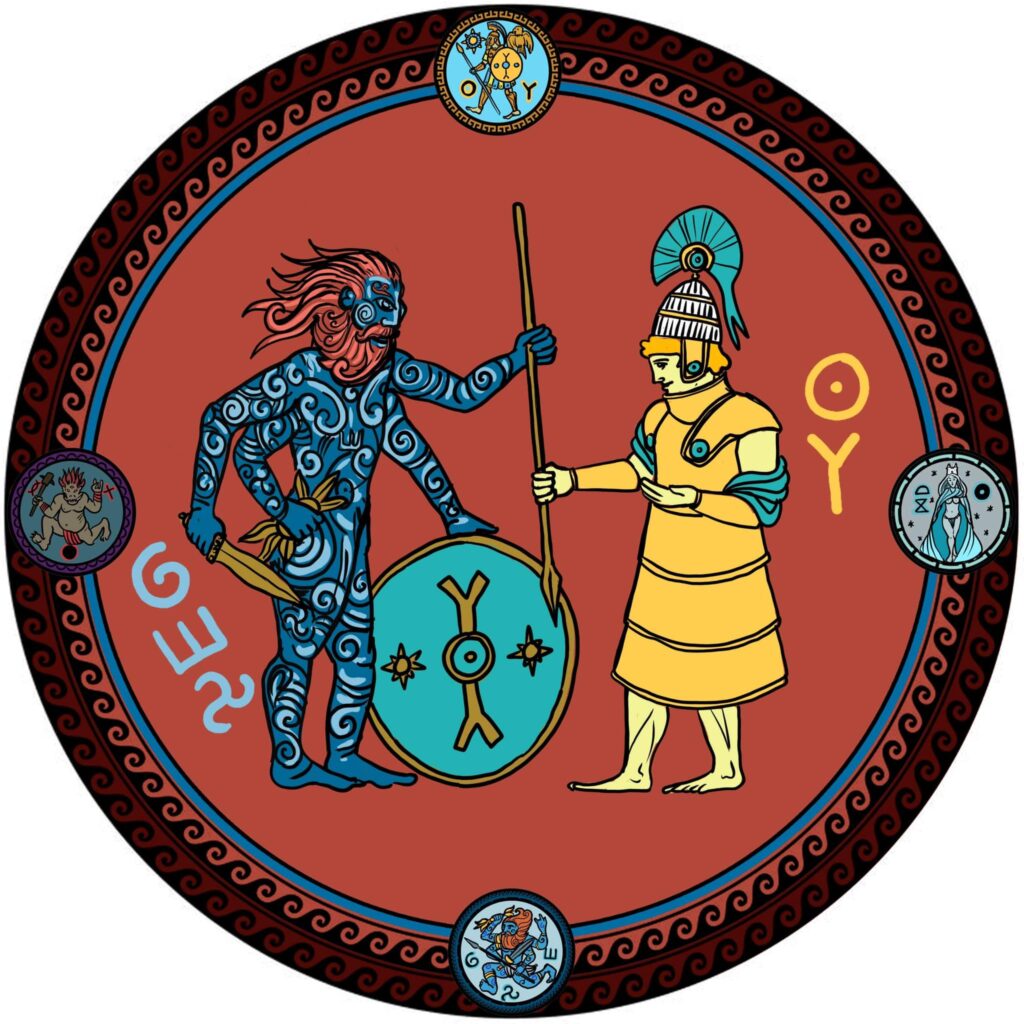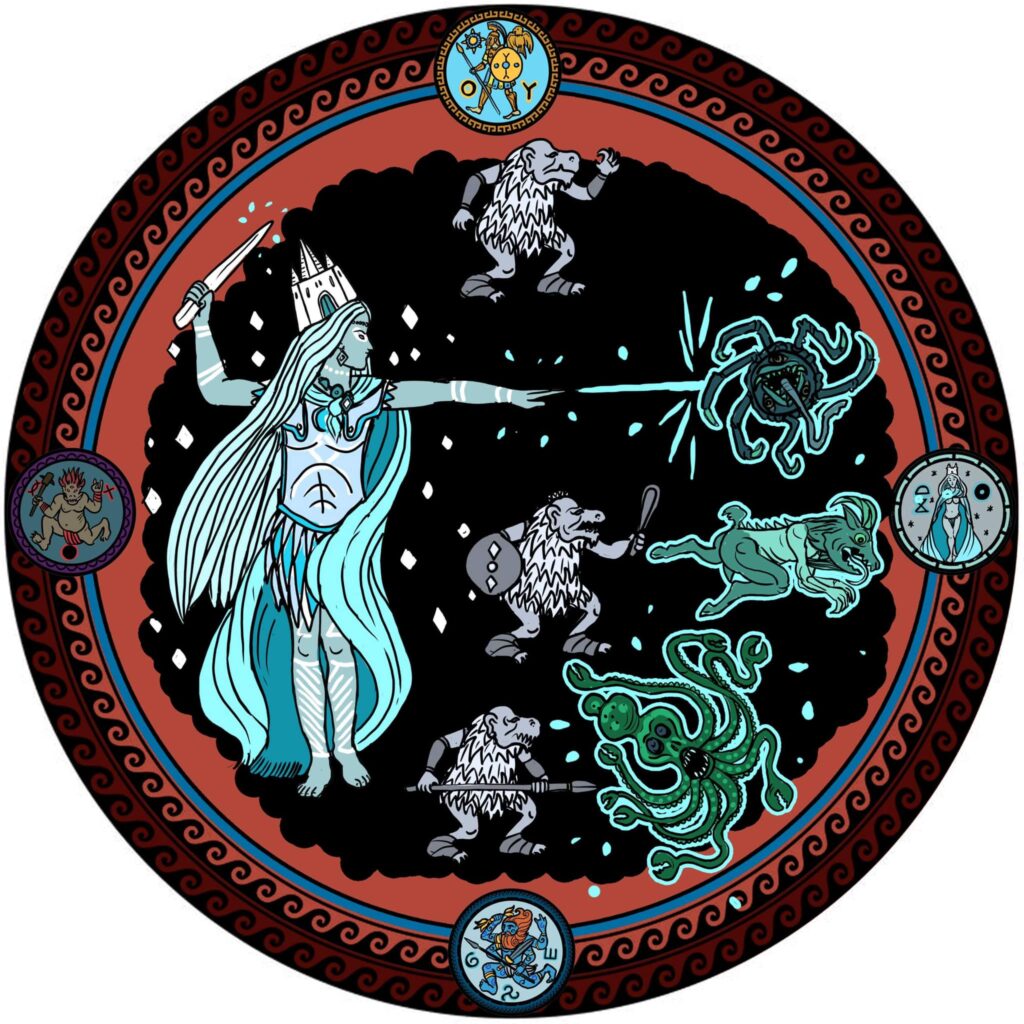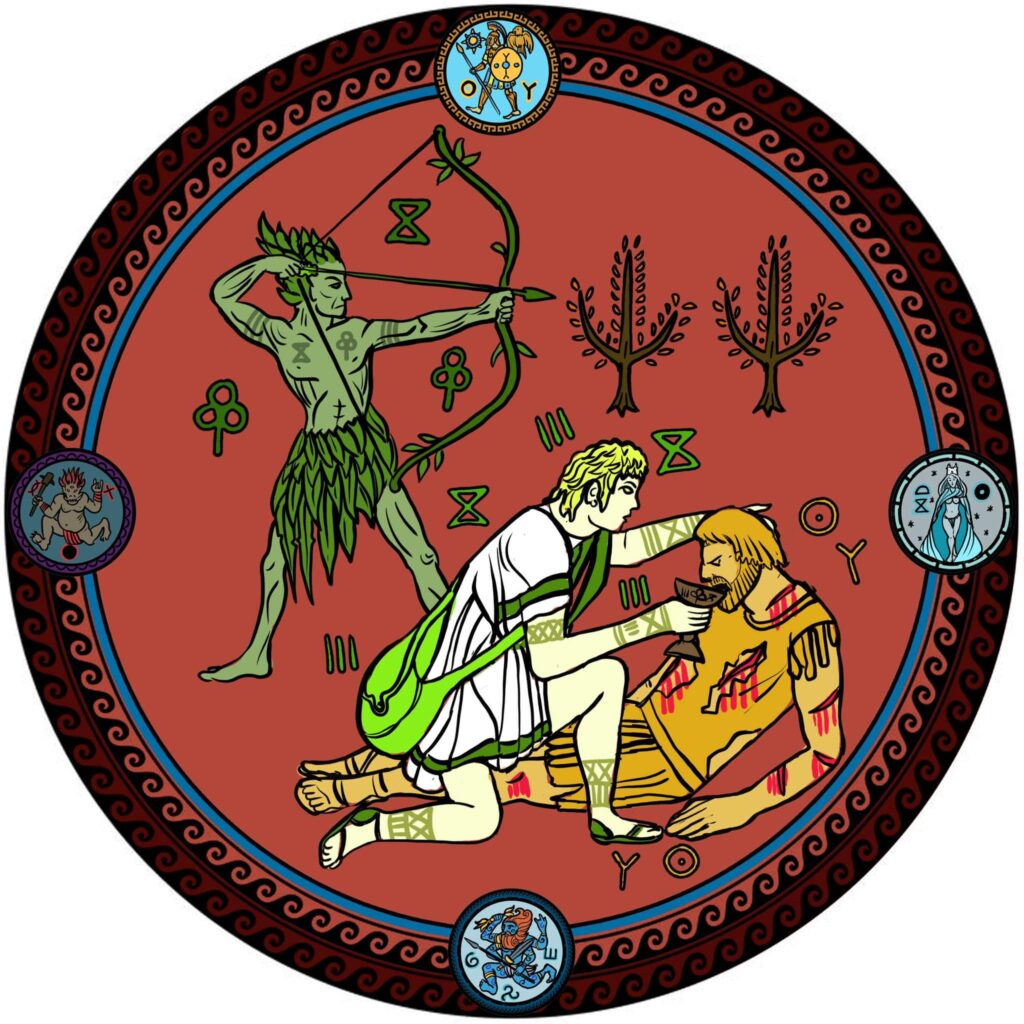Welcome to a new issue of the Journal of Runic Studies, the premier Malkioni publication for studies into the nature of Glorantha. If you haven’t subscribed yet, please consult with the spirit bound to the appropriate electronic page.
This is issue number 52 which means I’ve been going at it for a year now! The newsletter is happening once again on Monday because this week-end was actually extraordinarily busy for me… various other hobbies and family duties took precedence, but also I released a new adventure on the Jonstown Compendium! (more below)
God Learner Sorcery
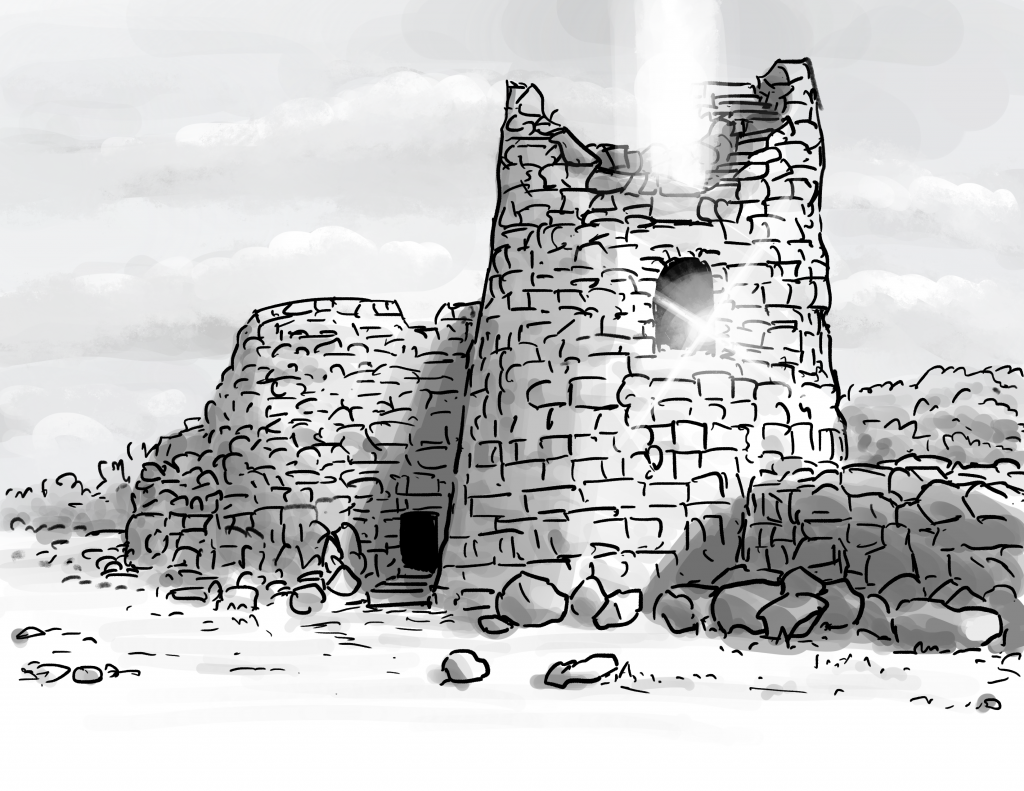
Here is what us God Learners were up to this week.
Bog Struggles is Out!

My new RuneQuest adventure is up on the Jonstown compendium! Help some newtlings fight off a horrible threat and join a water cult! It’s called “Bog Struggles” and you can get it here, or read a bit more here. Note that my previous adventure, “A Short Detour“, is currently on sale to celebrate the occasion!
Jonstown Compendium

The Jonstown Compendium is Chaosium’s community content program for all Gloranthan games, hosted on DriveThruRPG. Disclaimer: all the relevant links are affiliate links that hopefully will let us cover some of the hosting and maintenance costs for the website and podcast! Thanks for using them!
Velhara’s Mirror
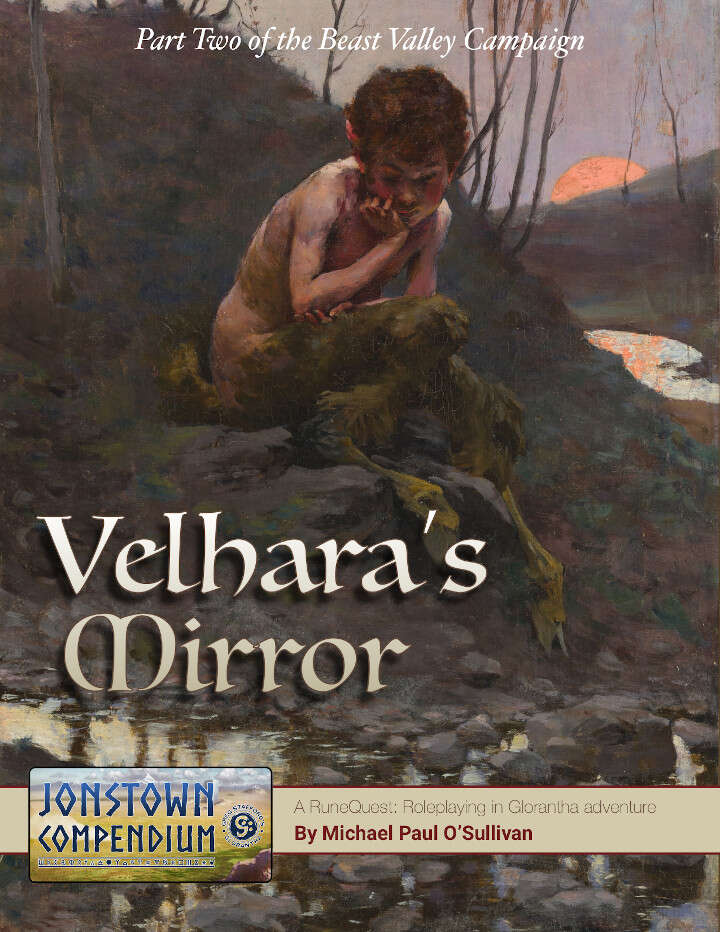
Michael Paul O’Sullivan has released a new entry in the “Beast Valley campaign” started with The Ruins of Bonn Kanach. The author says that despite this, Velhara’s Mirror can still used as a stand alone resource. It contains scenario seeds and one full adventure.
Update for Hsunchen of the East

Paul Baker has updated Hsunchen of the East again:
– The Damali (Fallow Deer) now added to the Hsa (Tiger), Lo Fak (Yak), and Pujaleg (Bat) people.
– Plan to add one more group in the next couple of months.
– Rules for generating characters, background on the hsunchen from an eastern perspecive, aswell as cults and myths/history.
Video Trailer for Pirates of the East Isles
Scott Crowder has posted a video trailer for his upcoming book on the Pirates of the East Isles!
Disclaimer: some of those drawings are mine!
Teaser for the Children of Hykim
Brian Duguid is making progress on The Children of Hykim, and shared these wonderful work-in-progress art pieces by Kristi Jones:

The book will describe in detail more than twenty of the totem animal (Hsunchen) tribes found in central and western Genertela. It will have rules for creating a Hsunchen adventurer, ideas for scenarios and campaigns, even some thoughts on Hsunchen heroquesting.
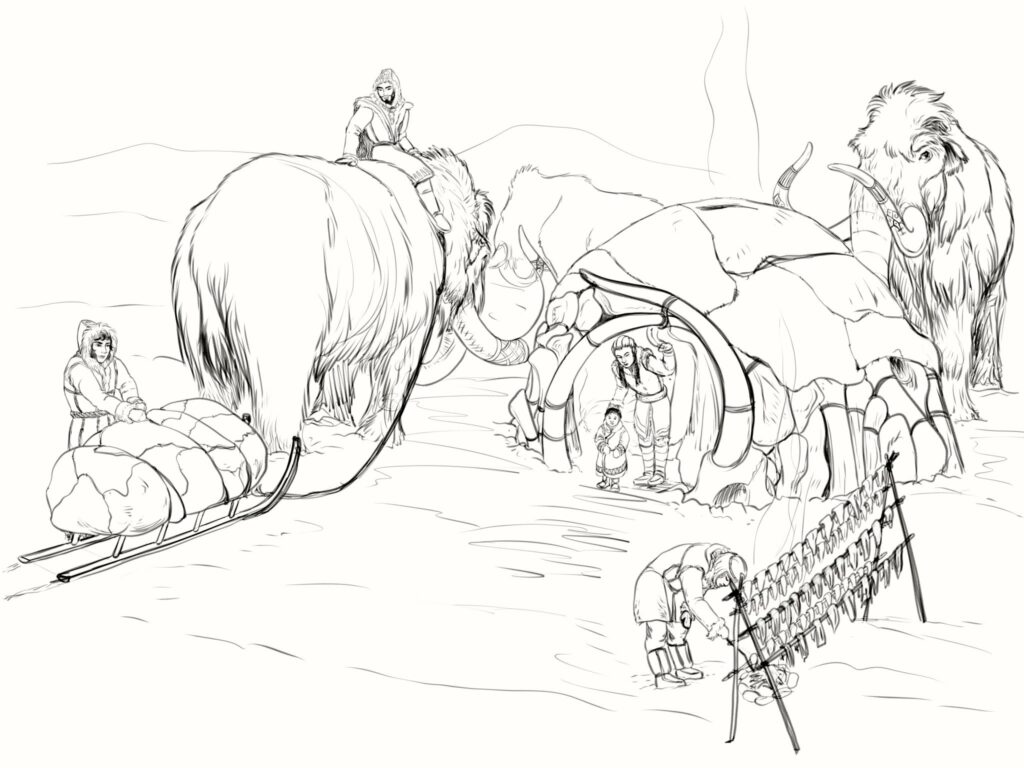
There will be quite a lot of information on Hsunchen magic, technology, culture – even economics i.e. trade relationships. I’m delighted that Diana Probst and Kristi Jones are both contributing art for the book, and I’m aiming for the artwork to address “ordinary” life as much as possible.As a taster, here are a couple of work-in-progress images from Kris showing a Rathori (bear-folk) family group fishing together in the midsummer; and a Hogari (mammoth-folk) group outside one of their mammoth-bone huts.
I’m very interested in this one.
Hill of Gold Art Preview
Simon Bray has done these wonderful “plates” for Simon Phipp’s upcoming Hill of Gold heroquesting book.
Jeff’s Notes

Jeff Richard, the current mastermind on everything Gloranthan at Chaosium, is often posting notes and thoughts on the RuneQuest Facebook group. Here’s our curated list from the past week. A partial archive of these sources is compiled on the Well of Daliath.
More about the EWF
As a complement to last week’s note on Dragon Pass in the Second Age, Jeff posted a “quick sketch showing the core areas of the EWF”.
This would have been the most civilised and most developed areas of the EWF.
We could also expect now to find the most EWF era ruins in these areas. Note that Upland Marsh was at the very center of the EWF.

So it is worth keeping in mind that many of the core areas of the EWF are still largely abandoned. Bonn Karpatch, Voss Varaina, Olorost, Orin Jistel, Salor,Bon Bolar, Intarn – all of these are now pretty much outside of settled areas. The ruins of the EWF are viewed as haunted and cursed.
A nice hint when you’re wondering where to put haunted draconic ruins…
Dragon Pass at the Dawn
The Guide to Glorantha already has a map of Dragon Pass at the Dawn, but I love seeing the originals from the Chaosium archives:
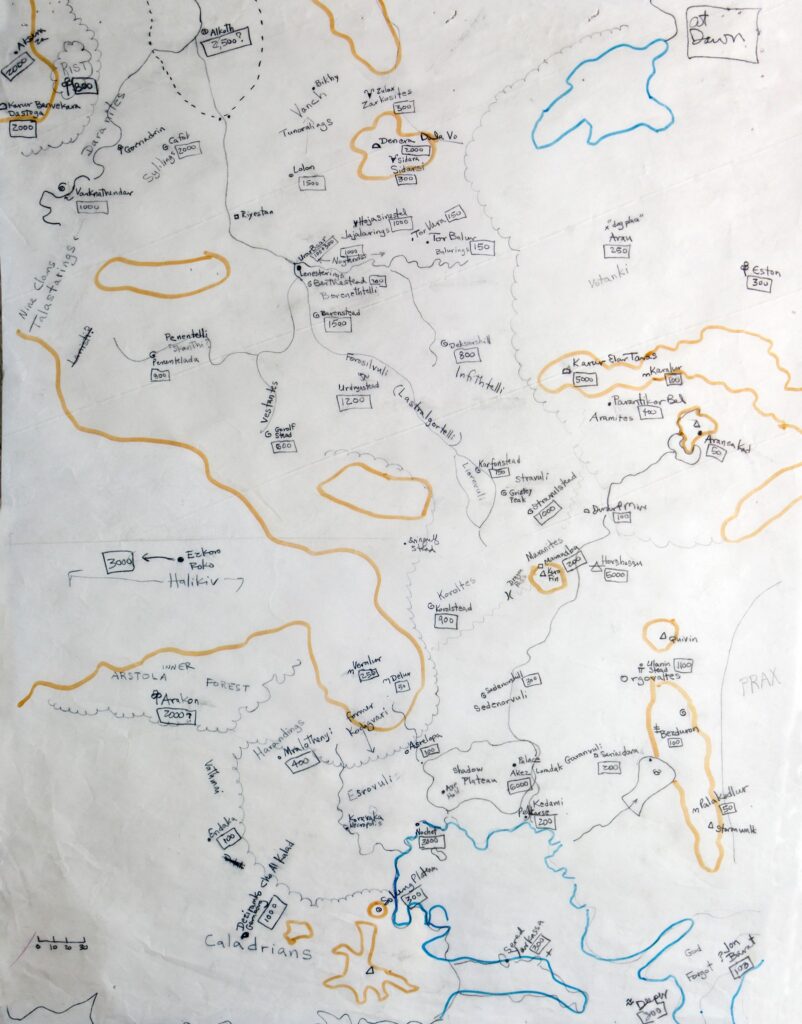
At the Dawn, Dragon Pass was one of the strongholds of mortal beings. Thanks to I Fought, We Won and the Unity Council, it was one of the main population centers of Genertela. But in truth, that is only in comparison with everywhere else. Let’s look at the numbers.
At the Dawn, there were about 55,000 mortals that participated in the Unity Council. Of those, 16,000 were trolls, 16,000 were dwarves, 5000 were dragonewts, and 13,000 were humans.
Only 13,000 humans! As Jeff puts it, “one way of putting this in context, is that the entire human population of Dragon Pass at the Dawn was smaller than the population of the Colymar Tribe.“
A century or so later, right before the foundation of the Second Council, the population has grown to about 125,000, but by then the human numbers had grown to 75,000.
Of course, it is worth comparing that with the current population of the old Unity Council lands – which is over 2.6 million!
On the Origins of Tarsh
Here is a lengthy transcribed email about the origins of Tarsh. Here’s what I found interesting:
- During the Second Age, the common folk worshipped Orlanth (including the Rex sub-cult) while the “savage but heroic” rules worshipped Yelm, which meant many religious rites highlighting the Orlanth/Yelm rivalry. This weird religious tradition was born from centuries of interaction with Dara Happa, along with a good dose of God Learner syncretism.
- After the Dragonkill War, when all humans were wiped out in Dragon Pass, the Orlanthi culture was split between those of southeastern Peloria and those of the Holy Country. Meanwhile, Dara Happan (and the basis of the Yelm cult) gets defeated by the Carmanians. Yelmalio survives as the Sun God (because that’s what Yelmalio does) although his martial role gets some competition from Shargarsh in some places like Alkoth.
- While Dragon Pass is closed, the Orlanthi of future-Tarsh are effectively in a dead-end, geographically speaking. “I imagine they sell grain and livestock to the lowlands, plus other raw materials.”
Then it gets even more interesting:
They also fight in the lowlanders wars. Many Orlanthi fought for and against the Red Goddess. And when Dara Happa revolted against the Red Emperor, an Orlanthi leader, Jannisor, brought an army of Orlanthi and other barbarians to sack Glamour. This was a very near run thing for the Lunar Empire, and after the revolt is finally defeated in 1285, the Red Emperor sends his Conquering Daughter to secure the south.
In about 40 years, she conquers Syllila, Vanch, Saird, and Imther. The Kynnelfing Alliance – the main Orlanthi tribal confederation – is defeated and the Daughter’s Road goes within 30 mile of the Deathline. Many Orlanthi flee Syllila, Saird, and Vanch and settle in Dragon Pass – especially those that were on the frontline against the Lunar Empire in the Dara Happan Revolt or against the Conquering Daughter.
At that point, people still think Dragon Pass is closed to humans, but the Conquering Daughter makes people desperate. That’s when some Orlanthi led by Arim the Pauper cross the line, realize it’s actually OK, and later found the Kingdom of Tarsh there.
Now already by 1350, I can see some big differences with these Orlanthi and those of the Holy Country. Yelmalio is already in their pantheon, and they know Yelm well (and have been ruled by him on many occasions, and not always badly). But Orlanth Rex is the king of the gods, and has the ability to impose his authority over the feuding clans. They have centuries of contact with Dara Happa. And they know the Lunar Empire. They were there when Jannisor shattered the gates of Glamour and when the Antelope People betrayed him. They saw the Moonburn. And witnessed the Conquering Daughter in action.
When the Lunar march south into Tarsh the first time, they get routed by the Tarshites who have “ancient powers of Dragon Pass” and can call upon Maran Gor. The Lunar retreat and soon they have bigger problems to deal with (that’s Sheng Seleris).
The Kingdom of Tarsh likely began as a confederation of tribes under the suzerainty of the Tarsh Tribe. The Danbalings of Kordros Island, the Barnteri between the Oslir and the Black Eel, the Alda-Chur of Far Point, and the Karvenings around Slavewall, all were ruled by the Tarsh Tribe, which extended from the Falling Hills to Kero Fin. The Uiteros and Quivini tribal groups were rebellious tributaries. The Grazelanders are initially close allies, and later enemies after the Tarsh King steals their sacred horses to create his own cavalry force loyal to him (the origins of the Pol-Joni). The Praxians and trolls are sometimes hired as mercenaries.
So taking a snapshot, around 1450, the Tarshites are a powerful barbarian kingdom. They dominate Dragon Pass, but I do not think they are particularly rich. There isn’t that much trade between the Holy Country and Peloria – Sheng Seleris is too disruptive for that. The Tarshites are recognizably Orlanthi, although some lowlander cults are likely well-known – Oslira, Yelm, Lodril, maybe even Dendara (although Ernalda is the main goddess). The Earth cults are VERY important, and Maran Gor and Babeester Gor are an important part of the kingdom’s strength, but also demand human sacrifice. But they also have Orlanth Rex, Humakt, and the other Lightbringers. Storm Bull, Eiritha, and Waha are not significant, while the conflict between Orlanth and Yelm gets played out in war with Pentans and Pure Horse People (as well as Dara Happans).
This is of particular interest to me because this gives a good trajectory for Tarshite culture, from which I can extrapolate a bit more while working on the Far Place (Alda-chur and Alone). This part of Dragon Pass is populated by originally Tarshite people, and I’d like it to feel different from Sartar.
And best of all, Jeff shared another set of historical maps, like this one below!

Turns out there are from the GregAnth Atlas, and there’s a bit of additional commentary at the bottom… so check that out!
More about Jar-Eel
We already had a look at Jar-Eel in past issues of the Journal (here and here), but let’s look again.
So people love to worry about Harrek the Berserk or complain about Argrath being a warlord, but one of the most important Heroes in the Hero Wars is Jar-eel the Razoress.
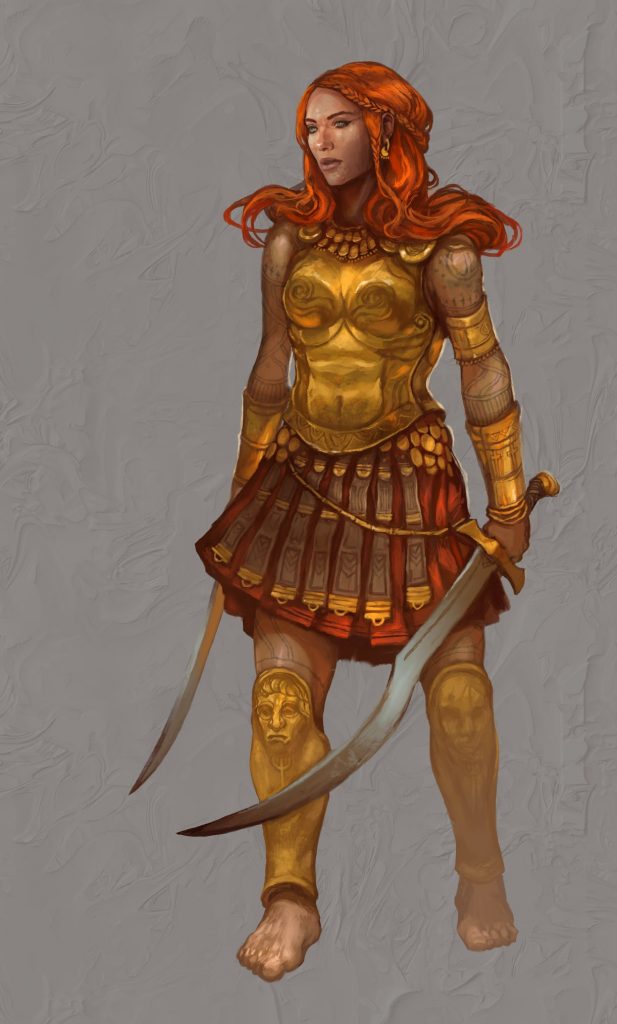
Going back to one of those earlier looks (the second link, to be exact), Jeff had detailed Jar-eel’s “unconscious life”:
Remember Jar-eel is similar to Harrek, not Argrath.
– Personal Power 50%
– Bloodspillers 20%
– Dream 10%
– Undifferentiated 10%
– Red Goddess 10%Despite – or perhaps because of – being widely worshiped in the Lunar Empire as the incarnation of the Red Goddess, Jar-eel’s mana primarily goes to her own personal aggrandisement, and another 20% goes to her Sardukar Guard. Sure she defends the Lunar Empire, but at least in part because it is a resource that enables her to do great things, but HER great things are the ultimate purpose of the empire, not vice versa.
Thinking of Jar-eel in this manner helps make her tick for me. She’s already proven her independence and autonomy from both the Red Emperor and the Red Goddess – you better accommodate her desires, because you are not going to stop her.
At least not unless you have your own superhero on your side.
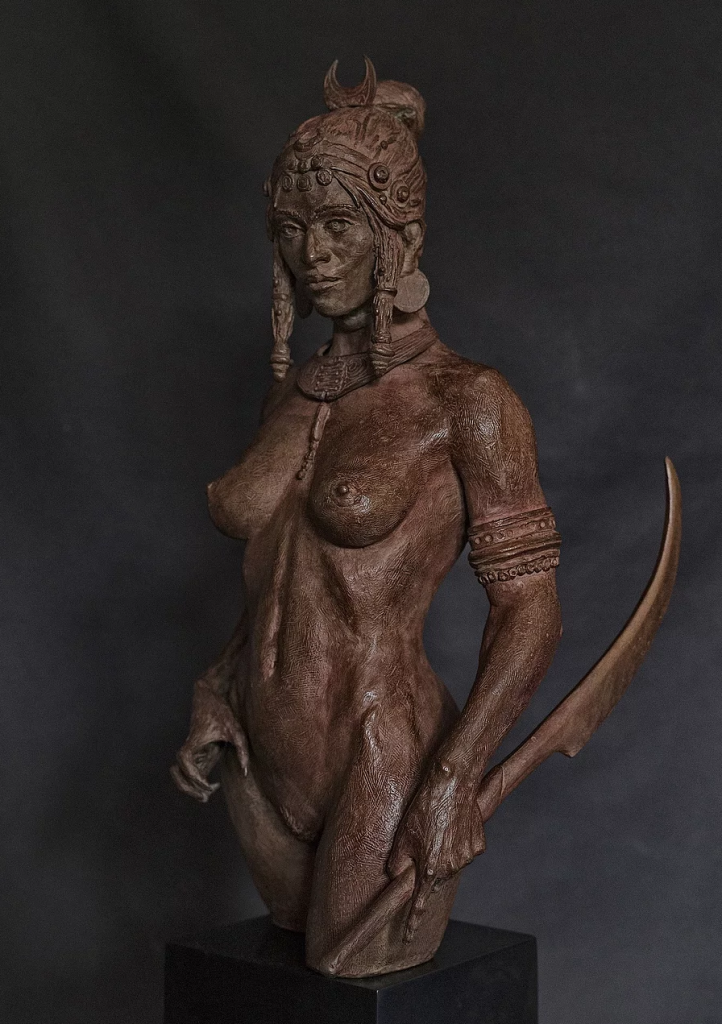
There’s more about these last two paragraphs in the next segment, but in the meantime, Jeff adds:
I do not know specifically when she proved that she was not overwhelmed by the Red Goddess, but I suspect it was between 1602 and 1610, when she was in her late teens.
Remember, Jar-eel was already a Red Goddess Initiate at age 8(!).
Becoming a Superhero
The previous bit about Jar-eel’s power and “independence and autonomy from both the Red Emperor and the Red Goddess” gets clarified when Jeff explains how to become a Gloranthan superhero:
Greg speculated that to become a Hero, one needed to:
1. Participate in at least two “great events” – heroquests outside of those known by cult or tradition. This would include cult heroquests that go outside of known paths.
2. Have at least four special items or abilities
3. Have at least one unique item or ability
And finally:
4. a final test against one’s own god where the Hero proves their independence.
I’m inclined to think that these more or less define our Gloranthan Heroes, although of course there going to be exceptionns. But Jar-eel, Harrek, Argrath, Jaldon, Gunda, Beat-Pot, Ethilrist, etc., all fit into this system nicely.
Note the importance of the Hero being independent from one’s god. Even those heroes who are revered as avatars of their god – e.g.,Harmast, Alakoring, Argrath, Hon-eel, Jar-eel, etc., proved their independence to their deity!
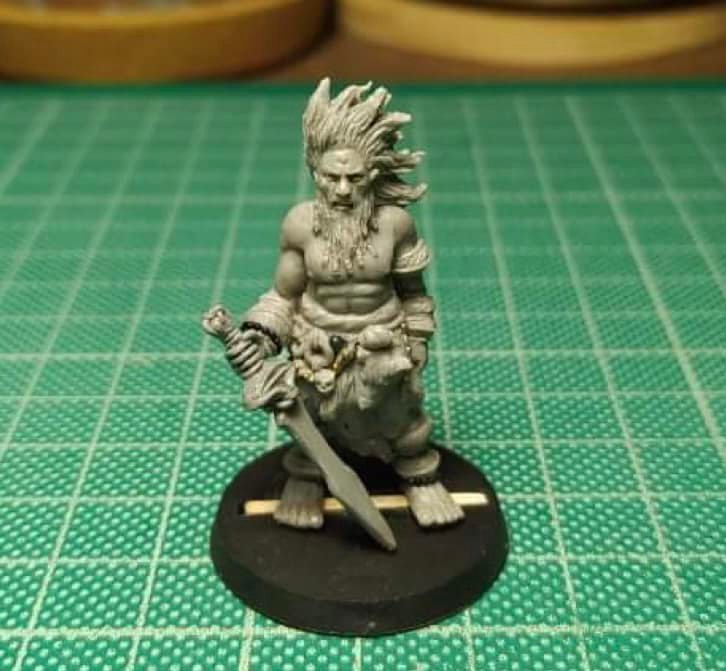
Don’t forget Arkat, too:
Heck [Arkat] proved his independence from at least FOUR deities!
All the heroquesting and heroic feats required to become a hero or superhero can’t be achieved by being a murder hobo, though. Jeff says that “you are unlikely to get very far without community support.” If the upcoming heroquesting rules are tuned correctly, you’ll need this community support to succeed at more than a couple heroquesting challenges… fingers crossed!
Map Scales
If you know me, you know that early in my Gloranthan studies I got confused by the various maps with different scales throughout Glorantha’s publishing history. Jeff has put his foot down and confirmed what the “real” scale is:
The map scale has always been one Dragon Pass hex is 5 miles or about 8 km. That’s the absolute scale.
That is the scale for the map in the Starter Set, the maps the Guide to Glorantha, etc.
About Garrath Sharpsword
A question about Garrath Sharpsword got Jeff to share some details about this elusive NPC.
First, a bit of background. Garrath Sharpsword appears in the classic Pavis: Threshold to Danger boxed set (now available in PDF and POD). He’s a Wind Lord who fled Sartar and spent some time with both the Praxian nomads and the Wolf Pirates, and he gets heavily involved in the “Giant’s cradle” incident. If that sounds a lot like Argrath, and if you realize that Garrath is an anagram of Argrath, then you can easily subscribe to the theory that Garrath is Argrath himself and that he changed his name at some point, either as a case of superhero-style hidden identity, or as a classic case of ancient leaders changing names to sound more important (we’re told in some places that “Argrath” means “Liberator” or something).
In the HeroQuest era, several books (like Pavis: Gateway to Adventure) chose to follow the “multiple Argraths” theory, where the identity of Argrath is up to the gamemaster and players (so that a PC could be the Argrath). This also meant that all the accomplishments attributed to “Argrath” in the “canon” could actually be distributed among both PCs and NPCs if necessary. This also gave the setting a little flair of real-world history, where composite historical figures are not uncommon.
Of course, it’s arguably simpler to just tell people that they can play along an alternate history of the setting where Argrath is just someone else who does other things, rather than tell ask gamemasters and players to engage in some sort of world-building puzzle challenge where the goal is to fit all the pieces. So the latest RuneQuest product line won’t revive this “multiple Argraths” thing and will just flatly present who Argrath is and what he did, and then people can do whatever they want with the information. In this version, Garrath is Argrath… which shouldn’t be surprising if you’ve read Prince of Sartar.
Hopefully this long-winded introduction was welcome for the few newbies in the back.
So if you imagine Garrath Sharpsword circa 1621 – he’s very skilled at sword, shield, riding, spear, dagger, and thrown dagger. He is lean and wiry man, very charismatic, with the sort of quiet self-confidence only a person who has lost everything and then rebuilt himself up is able to have. He easily passed the test of the Weaponsmasters Guild, which gave him the right to have an independent school, wear his arms openly, and a degree of freedom despite being openly a Wind Lord of Orlanth Adventurous. He is fluent in Praxian (as well as Sartarite) and has many Praxian friends – mainly Bison Riders and High Llamas, but some Sable Riders and Impala Riders as well. He’s more comfortable in the company of his students, Praxian shamans, or adventurers than he is with the Garhound clan leaders or city leaders, and stays out of city and temple politics.
The Garhound are an influential family of Sartarite expats in Pavis.
Gim Gim the Grim is thought to consider him one of the Orlanth Allies, and the Moon Masks keep an eye on him, but given that he heads a recognized weapons school, they avoid harassing him or his students too much. Gim Gim keeps Krogar Wolfhelm and Govoran the Magnificent (who of course has his own mercenary band) under far more scrutiny.
Gim Gim (often spelled Gimgim in old material) is a Lunar spy who manages the Emperor’s intelligence network in Prax.
The Moon Masks are one of the many gangs of Pavis, but those are affiliated (unofficially, as I understand it) with the Lunars. You can bet Gim Gim occasionally hires them without them even knowing where the contract comes from.
The Orlanth Allies is another gang, mostly composed of disgruntled Orlanth worshippers (remember that in 1621, the Orlanth cult is still somewhat suppressed by the Lunars).
You can stat that guy up if you want, but you need to keep a few secrets, like his Dragontooth Necklace, his powerful allied spirit, his connection with the White Bull spirit, and several other boons and gifts gained from heroquesting, hidden from view. But in a Lunar game, Krogar Wolfhelm or Jarang Bladesong are much more likely to cause trouble than the “weapon master Garrath Sharpsword”. And when he does reveal himself, it is as per the Cradle scenario and then he is gone for years.
And when he returns, it is with an army of Praxians.
Yep, that’s Argrath alright. As for the other named NPCs here, Krogar Wolfhelm and Jarang Bladesong are other Wind Lords living in Pavis around the same time.
Miscellaneous Notes
Here some other miscellaneous notes that were posted last week, and which I don’t have time to annotate:
- Speaking of Garrath Sharpsword and Orlanth cult suppression, here’s a note about how he and his friend setup a clandestine shrine in the Big Rubble.
- And while we’re at it, here’s a note on Orlanth Victorious, basically a “fully integrated Orlanth” cult that combines Adventurous, Thunderous, and Rex. It’s supposedly dangerous because you get sucked into Lightbringers Quest territory pretty easily when you heroquest. Jeff added in a comment that this is very dangerous, for a powerful myth attracts powerful threats, and when Argrath was getting started he didn’t have much community support (it was just a shrine!)
- Jeff seems happy that Dragon Pass and most important places in Genertela are rather small. While I actually think Genertela is a bit too small, Jeff’s dig towards Westeros is probably fair since apparently the author said it was the size of South America!
- Why do traders travel along roads and not rivers through Sartar? Well, it’s mostly impractical.
- What is magic? Apparently it’s not just a collectible card game that should have stopped a long time ago. Here are some general ideas on Gloranthan magic.
Community Roundup
The community roundup is our highlight of interesting things being mentioned in the Glorantha-related Facebook groups, sub-Reddits, and other similar online places.
Custom Mistress Race Troll Miniatures
Paul Lidyard has these really good looking custom-made Mistress Race Troll miniatures!
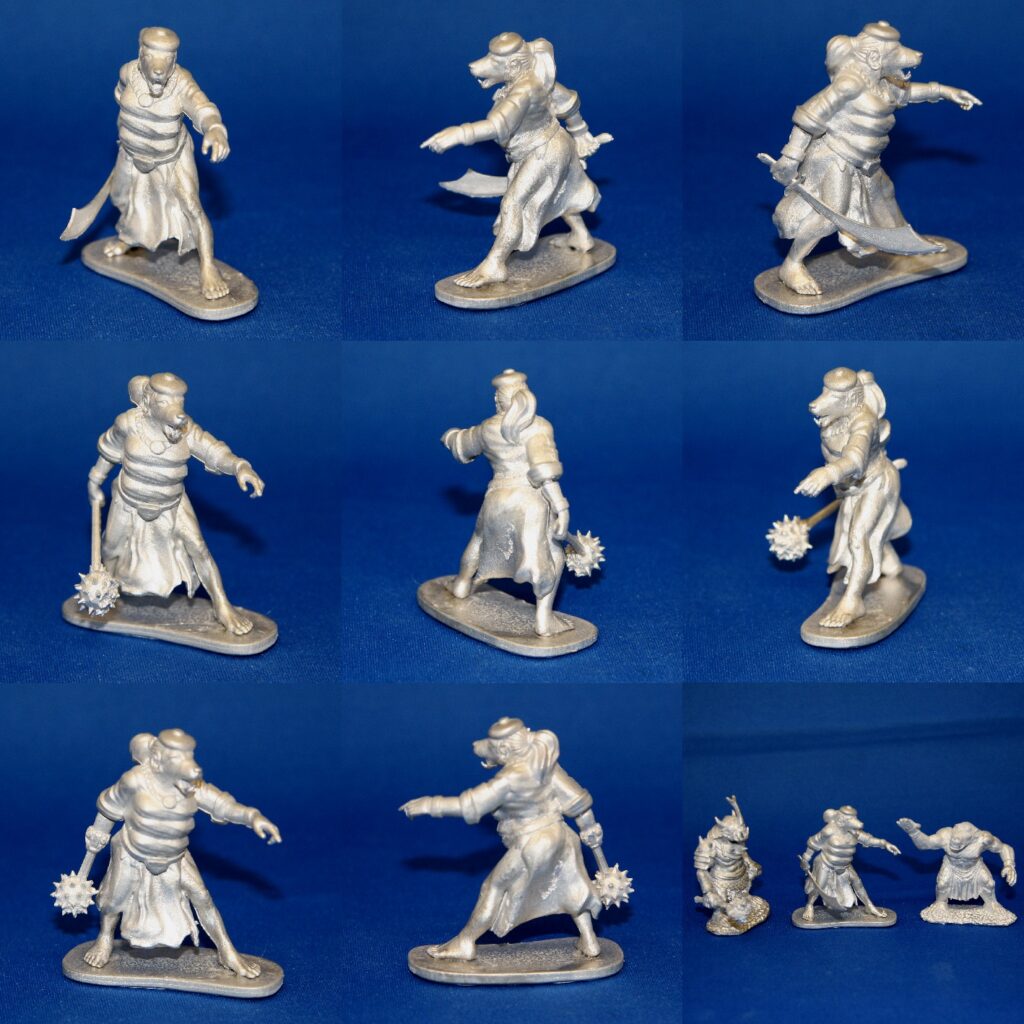
My brother made this for my birthday last year, just got round to putting it in a mould. Not sure if it will get released but I thought I would share some pictures here. Mistress Race Troll with scimitar, Mistress Race Troll with mace and a “wristless mace troll”. Cue the bad troll puns.
Bad troll puns… bad troll puns… OK, how about this one:
- Did you know that the trolls also have a famous indie, alt-rock, hat-wearing musician? But he’s named Stan?
- Yep. The Uz Beck is Stan.
Mobile Shrines
Diana has some advice for adding mobile shrines to your game:
As pointed out by Skull Dixon, in the SoloQuest there are some mobile shrines – there are places set up to worship before the big battle. There’s a Vingan shrine, and a Humakti one, and there are also people worshipping their Ancestors in the river. These are not permanent resources, and in the case of the Ancestor worship may not be a resource at all.
[…]
But what are these shrines. If you want to have rules for them, how do we think they’ll work?
Read about it here, it has some good ideas!
More Felix Figure Painting Photos
Regular Gloranthan miniature painter (and by which I mean that they paint Gloranthan miniature, not that they are a very small person who paints Gloranthan landscapes or something) Felix Figure Painting has another wonderful picture:

Some Glorantha Trolls/Trollkin by Mad Knight and 3 Infinity Engine Rubble Runners for a commission.
More close-up pictures here.
Snakepipe Hollow Walkthrough (Part 3)
DC has uploaded part 3 of the Snakepipe Hollow walkthrough in 3D. Still as claustrophobic as ever…
Boldhome in 3D (WIP)
Speaking of DC, their next project is modeling Boldhome:
I’ve been working on a little side project, turning the Boldhome map in to an actual landscape, here are a couple of screen shots. In the first one, I’m using the map as a guide for features, in the second one it’s a landscape material that changes based on height and slope steepness. I will be adding the waterways, roads and trees, but I’m not sure if I’ll go much further than that.
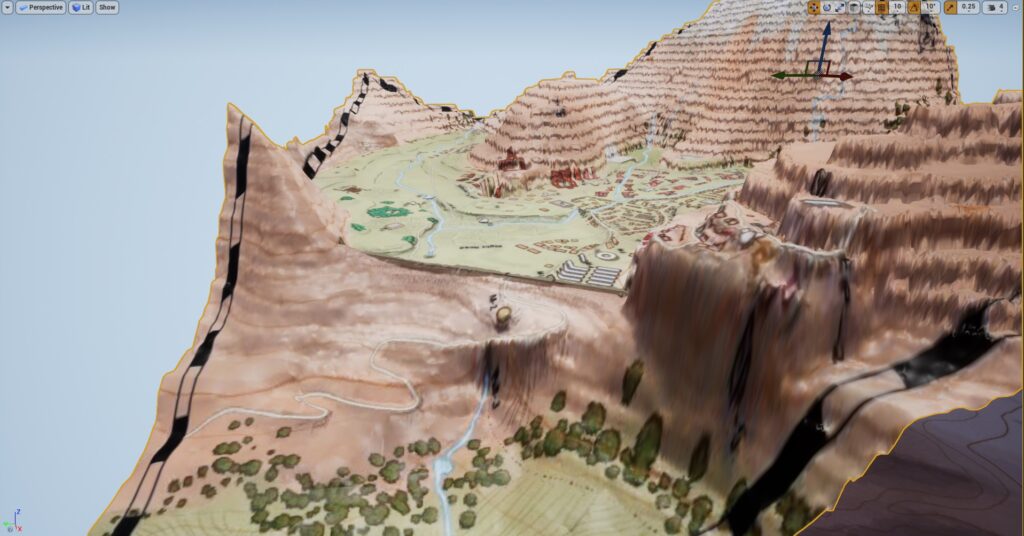
Thank you for reading
That’s it for this week! Please contact us with any feedback, question, or news item we’ve missed!



